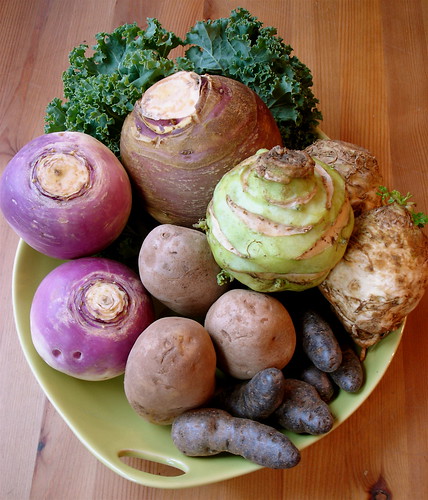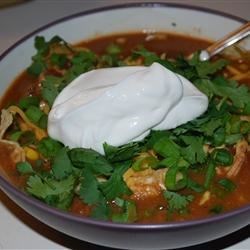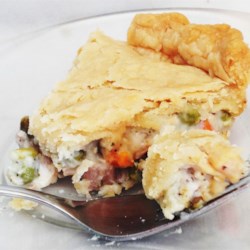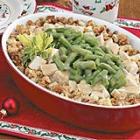 It is getting chilly outside as the official start of winter is right around the corner. Even though the trees are not blooming and the temperature has dropped, there is still fresh produce to be found. Right now there is an abundance of root vegetables, dark leafy greens, and winter squash.
It is getting chilly outside as the official start of winter is right around the corner. Even though the trees are not blooming and the temperature has dropped, there is still fresh produce to be found. Right now there is an abundance of root vegetables, dark leafy greens, and winter squash.The purpose of this blog is to share information with our WIC participants. We will be posting our upcoming events, recipes, health tips, and any changes to our program. If there is anything you would like to see on this blog, please send us an email.
Monday, December 19, 2011
Winter Produce
 It is getting chilly outside as the official start of winter is right around the corner. Even though the trees are not blooming and the temperature has dropped, there is still fresh produce to be found. Right now there is an abundance of root vegetables, dark leafy greens, and winter squash.
It is getting chilly outside as the official start of winter is right around the corner. Even though the trees are not blooming and the temperature has dropped, there is still fresh produce to be found. Right now there is an abundance of root vegetables, dark leafy greens, and winter squash.Thursday, December 15, 2011
Managing Nausea and Vomiting During Pregnancy

Many women experience some degree of nausea and/or vomiting during pregnancy. Some have it worse than others, and some never experience at all. If you are one of the unlucky ones to experience severe nausea and vomiting, you know that it can be crippling. Some women have nausea and vomiting so bad that they have to be hospitalized (a condition called hyperemisis gravidarum). If you are having nausea and vomiting, forget all the traditional nutrition advice you receive about healthy eating during pregnancy.
If you are experiencing nausea and vomiting, your goal is calories and fluid. Where those calories and fluids come from do not really matter when you cannot keep anything down. This is called "sick day meal management". Ask yourself what you feel like you can eat or drink at any given moment. It might be something cold and bland (how about cottage cheese?), it might be something sour and crunchy (salt and vinegar chips?), it might be something bitter (grapefruit?). Whatever sounds good to you, eat it! And you may have some strange cravings. Even the most deplorable diet of candy, chips, and soda is better than nothing. Eating nothing can get you in the hospital....
Ask yourself what sounds good and try to eat or drink a little something every hour or so, whatever you can manage. Keeping a little food on your stomach at all times can help ease feelings of nausea and may even help you be able to keep more food down when you are feeling better. Drink small sips of whatever you can keep down throughout the day (lemonade, gingerale, fruit juice diluted with water, seltzer, sprite... plain water does not work well for alot of women but it might work for you!) Your goal is to keep from getting dehydrated.
Many pregnant women tell us that they can handle fruit and enjoy eating alot of fruit during their pregnancy. That is a great choice because you get calories AND fluids from fruit. If you cannot drink enough liquids, eat foods that contain liquids if you can handle them. These include foods like yogurt, ice cream, fruit, soups, jello, puddings, and popsicles.
Here are some other tips that might help:
- Taking your prenatal vitamin is important, but it can aggravate a queasy stomach. Try taking your vitamin right before bedtime or try a gummy prenatal vitamin.
- Ask your doctor about certain prescription medicines that can help ease severe nausea and vomiting.
- Some women find that licking or smelling a lemon can calm a quesy stomach. Carry some lemon wedges around with you in your purse if this helps you.
- Nausea and vomiting are often connected with offensive smells. Pregnant women have a stronger sense of smell and you may find yourself bothered by things you have never noticed. Common offensive odors include cooking foods (especially meats), old coffee, perfumes and colognes, etc... Avoid these odors if possible. Let someone else do the cooking if kitchen smells bother you. Kindly ask your partner or coworkers to avoid using perfumes and colognes.
- If you experience nausea and vomiting mainly in the morning ("morning sickness"), it may be connected with low blood sugar from not eating all night. Be sure to eat a bedtime snack right before bed and eat a little something every time you get up in the middle of the night to go to the bathroom (as most pregnant women have to do frequently). It doesn't have to be alot, just a spoonful of cottage cheese or a couple crackers or chips. One of my clients cooked a bunch of hard boiled eggs (a food she liked and felt like she could tolerate) and would eat an egg or two in the middle of the night.
- Also, keeping some food near your bedside and eating a little something before getting up and moving around can help settle your stomach if you tend to have morning sickness.
Be sure to ask for advice from your doctor or nutritionist if you are battling nausea and vomiting. You do not have to fight it alone! For more information check out this book: No More Morning Sickness: A Survival Guide for Pregnant Women by Miriam Erick.
Remember that eating a variety of foods from all the food groups is especially important while you are pregnant. But when you are feeling very ill, this simply is not your focus. Do everything you can to help yourself feel better and you can worry about your food groups later when you can actually keep them down!
-Allison Leonard RD
Tuesday, December 13, 2011
Just one more bite! Tips for surviving holiday eating..
 You made it through Thanksgiving, now just one more holiday, Christmas.
You made it through Thanksgiving, now just one more holiday, Christmas.1. Don’t arrive to parties on an empty stomach. Have fresh fruit, yogurt, or a small sandwich before you arrive.
2. Offer to bring a healthy dish.
3. Select small portions. Only put two or three bites of each food item on your plate.
4. Sit away from the food. This will keep you from mindlessly overeating.
5. Eat slowly. Take time to enjoy the taste of each food. Holiday treats are delicious!
One of the best ways to enjoy the foods you love during the holidays without gaining weight is to kick up your exercise routine. If you exercise for 30 minutes per day, think about adding an additional 15 minutes to your routine. Here are some ideas to get you moving:
•Go on a 15 minute brisk walk when you wake up in the morning.
•Do crunches and push-ups during commercial breaks.
•Play flag-football with your family and friends.
•Bundle up, and go on a run with your older children.
Holiday candy and traditional family feasts, as well as cooler weather and thus less physical activity, can leave children vulnerable to holiday weight gain. Here are some reminders for you and your kids:
•Don’t allow your child to graze between routine snacks and meals. They should maintain their regular eating schedule.
•Keep holiday treats and candy away from children. Bowls of M&M’s, chocolate-covered pretzels, and cookies can be tempting to both kids and adults. Instead, display healthy holiday snacks like nuts and cranberries on the table for snacks.
•Allow children 1-2 special treats/day. Ask relatives and friends not to give candy or food as gifts.
Tuesday, November 29, 2011
Smart Snacking
 Almost everyone eats snacks. Some adults can do OK with 3 big meals a day, but for many of us, snacks are important to help get us through to the next meal time. Children especially need snacks because they have very high energy needs and small stomachs. They cannot get enough of what they need from 3 meals. Plan for your child to have 2-3 snacks and 3 meals each day. 3 meals alone may not be enough!
Almost everyone eats snacks. Some adults can do OK with 3 big meals a day, but for many of us, snacks are important to help get us through to the next meal time. Children especially need snacks because they have very high energy needs and small stomachs. They cannot get enough of what they need from 3 meals. Plan for your child to have 2-3 snacks and 3 meals each day. 3 meals alone may not be enough!For kids, snacks can either help their nutrition or hurt their nutrition. Snacks will hurt their nutrition if:
- Children are allowed to snack or "graze" all day and whenever they want. Little contraptions exist now that allow toddlers to carry around cereals or little "puffs" and eat them all day. This is not really a good idea. Neither is allowing your child or toddler to carry around a sippy cup or bottle. What happens when children do this is that they do not eat very well at mealtimes because they are not hungry. No wonder! They have been eating and drinking all day! Some children get rotten teeth from eating and drinking constantly as well...
- Snacks are given as rewards for eating at mealtime. This can teach a child to overeat.
- Snacks are given any time the child does not want to eat their meal. This can cause a picky eater.
- They are given too close to the next meal time.
Snacks can help your child's nutrition if
- They are planned to be about 2-3 hours before their next meal.
- They are eaten at the table or high chair only.
- They contain nutritious foods. Try to regularly have snacks that contain milk, cheese, yogurt, fruits, vegetables, and grains. Remeber that snacks help fill nutrition gaps and should really be considered "mini meals".
For a good snack try to have one energy food (carbohydrate) and one growing food (protein).
Energy foods are foods like: bread, crackers, cereals, tortillas, fruit, vegetables, juice (only once a day)
Growing foods are foods like: milk, cheese, yogurt, meats,beans, peanut butter, nuts, eggs
Here are some examples of snacks that contain both types of foods. These snacks will help your child feel full and happy until their next meal:
- Fruit and Cheese
- Cereal and Milk
- Crackers with cheese or peanut butter
- Half of a sandwich (with peanut butter, cheese, or meat)
- Fruit and milk
- Graham crackers and milk
- Fruit or vegetable juice and string cheese
 - Allison Leonard RD
- Allison Leonard RD
Monday, November 28, 2011
Protecting Little Smiles
Why is it important to care for baby teeth?
Even though they will eventually fall out, baby teeth hold the place where adult teeth will grow.
Also, it can be difficult to eat a large variety of healthy foods without healthy teeth or with constant toothaches and brittle teeth that chip easily.
Here are some of the Do's and Don'ts of Baby Teeth:

Big Changes Coming!
NEW HOURS
Spotsylvania- 2nd Monday of the month will be open 8am- 7pm
Fredericksburg- 2nd Tuesday of the month will be open 8 am-7pm
Caroline- 2nd Wednesday of the month will be open 8am- 5:30pm
Stafford- 2nd Thursday of the month will be open 8am-7pm
Let us know what you think about the new hours. If you like the Saturday clinic better just send us an email or call your local health department.
- Eileen Alwang
WIC Coordinator
Wednesday, November 23, 2011
Exciting Opportunity Ahead...

Rappahannock WIC is excited to announce that we will be doing store tours for our WIC participants!
Come learn how to use your WIC food instruments and get the best nutritional bang for your buck in our local stores. So far we will be doing the tours at the Southpoint Wal-Mart in Spotsylvania and the Giant off of Garrison Road in Stafford. Here are some tentative dates and times. These times and dates are subject to change so be sure to check back!
South Point Wal- Mart WIC Tours:
January 20 at 10:30 and February 3 at 10:30 and 3:00
February 24 at 10:30 and 3:00
March 2 at 10:30 and 3:00
March 23 at 10:30 and 3:00
Giant Tours:
January 19 at 10:30 and 3:00
February 2 at 10:30 and 3:00
February 23 at 10:30 and 3:00
March 1 at 10:30 and 3:00
March 22 at 10:30 and 3:00

If you would like to attend one of the free tours or would like more information call Allison Leonard at 540-899-4142 extension 5948.
Thanksgiving, Round 2!






Tuesday, November 15, 2011
Tuesday, November 8, 2011
Homemade Apple Cider

-Add sugar (start with 1/2 cup, you can always add more later)
-Add spices, and cover with water.
-Bring to a boil and boil uncovered for at least an hour.
-Cover and reduce to a simmer. Allow juice to simmer for at least two hours.
-Uncover and use a potato masher or big spoon to roughly mash content of pot. To further reduce: continue simmering until cider is dark and tastes sweet and spicy.
-When cider is ready allow to cool then strain apple pieces and whole spices into a clean pitcher or pot.
Leaves, leaves and more leaves!

Be sure to enjoy a nice warm cup of apple cider with the family at the end of the day. Oh and don't forget to add cinnamon sticks to the cider for a little added flavor!
Happy Fall!
Monday, October 31, 2011
Pumpkin Eating!

How to handle the treats...

Monday, October 17, 2011
Shopping on a Budget
 It is becoming more and more difficult to stretch a dollar these days. With the prices of everything going up, we are all looking for good deals-- that includes trying to get the best deal when it comes to food too. Grocery stores, food companies, and restaurants are also aware that you are looking for affordable ways to feed your family. Sometimes that means that their advertisements can mislead you into thinking that you are getting a better bargain than you actually are.
It is becoming more and more difficult to stretch a dollar these days. With the prices of everything going up, we are all looking for good deals-- that includes trying to get the best deal when it comes to food too. Grocery stores, food companies, and restaurants are also aware that you are looking for affordable ways to feed your family. Sometimes that means that their advertisements can mislead you into thinking that you are getting a better bargain than you actually are. These are questions you want to ask yourself when deciding which foods to purchase.
These are questions you want to ask yourself when deciding which foods to purchase.- Go with a shopping list and stick to it!... Having a list makes your shopping trips shorter and less frequent. Sticking to that list saves you money because you are less likely to make impulse purchases and extra trips to the grocery store which ofter result in even more impulse purchases.
- Look above and below eye-level on the shelves for better bargains.
- Check the unit price of items...The lower unit price is the better deal. The unit price tells you the cost per oz, liter, kilogram, etc. So this is how you know exactly how much you are paying for the amount of food you are purchasing.
- Beware of the ends of the aisles... These items usually appear to be bargains, but may actually cost more and tend to be less nutritious.
- Cut back on meat... Meat is usually the most expensive item you purchase. You can still have your meat, but add beans*, whole grains*, and more fruits* and veggies* instead to stretch out the meat you do buy. You can add veggies to almost any favorite meat recipe like these burgers or your favorite lasagna.
- You can use coupons with your fruit and vegetable vouchers to get more food at a lower cost.
- Buy dried beans*... These nutrient powerhouses are packed with protein and fiber. Depending on the type of beans and the store, they can average between 12 and 21 cents an ounce. Although it takes a little more planning to use them, you can cook a large amount at once and freeze them for later use.
- Try hot cereals*... These are a great, nutritious breakfast item. Even if you're not a big cereal eater, you don't have to worry about these going stale after they've only been open for a few weeks. Also, when buying hot cereals, consider purchasing old fashioned oats instead of quick or instant versions to save you money.
- Shop the Perimeter... Not walking down aisles when you don't need to means fewer chances of making impulse purchases which are often foods that are not as good for you and your family.
- Don't let your WIC food instruments go to waste... pay attention to the dates at the tops of your food instruments and consider buying things that you don't usually cook. Just because you haven't made it before doesn't mean that you can't try it out.

Being a smart shopper means finding a balance by comparing prices to find the best value for your budget and your health. You can be a smart shopper!
References:
Community Action on Obesity. The Bargain Shopper's Guide to Healthy Eating. [motion picture]. 2011.
Cost of foods
Thursday, October 13, 2011
Pumpkin Painting!
 Halloween is just around the corner, and one of the most popular ways to celebrate this spooky holiday is to carve pumpkins! Unfortunately, this tradition is not the safest for young children (or adults, for that matter!). Not to mention the fire hazard that is created by lighting a candle inside the pumpkin. A safer alternative that can be just as fun and decorative is to paint the pumpkins!
Halloween is just around the corner, and one of the most popular ways to celebrate this spooky holiday is to carve pumpkins! Unfortunately, this tradition is not the safest for young children (or adults, for that matter!). Not to mention the fire hazard that is created by lighting a candle inside the pumpkin. A safer alternative that can be just as fun and decorative is to paint the pumpkins!What you need:
- paper towels
| Use a stencil! |
Friday, September 30, 2011
Fall Festivities
 We're only a week into the new season and there is already much to look forward to. There are some great events happening all over the community this month. Check them out:
We're only a week into the new season and there is already much to look forward to. There are some great events happening all over the community this month. Check them out:Monday, September 26, 2011
An apple a day...

- An apple makes a perfect on the go snack. Make sure to wash the skin thoroughly.
- Cut up apple slices and serve with peanut butter and a glass of milk. A great nutritous snack your kids will love!
- Cut up apples and add them to salads.
- Diced apples are a great addition to oatmeal. Add some cinnamon and a little sugar for a really special breakfast.
- Apple slices taste great with cheese. This is a good snack that will give you energy and stick with you!
Here is a tip to keep your apple slices from turning brown: add a little bit of lemon juice.
- Allison Leonard RD
Monday, September 19, 2011
Cheap, Easy and Healthy: Dinner ideas for busy parents

Our schedules are hectic and the days of the family dinner are disappearing unfortunately because of our busy schedules. Your children need a meal and they need you to eat with them at the table (or with some other responsible adult), but don't get caught up in the guilt and the "shoulds" of feeding your family. All you need to do is set a time for dinner, make everyone sit down at the same time, and put something on the table to eat. Make dinner easier on yourself and you will find yourself looking forward to family meals more and more.
- Grilled cheese sandwiches and tomato soup (use WIC cheese and whole wheat bread from your WIC food instruments)- perfect for a chilly fall day!
- Try breakfast for dinner- Eggs, toast or cereal, fruit, and milk (all WIC foods!)
- Mexican night- bean and cheese burritos (use your WIC beans instead of refried beans and your WIC whole wheat tortillas). Serve with your favorite canned or fresh fruits or veggies (I like corn and tomatoes with mexican food).
- Tuna melt sandwiches with cut up carrots and ranch dressing.
- Homemade mini pizzas (with your toppings of choice, you can use your WIC whole wheat tortillas here as well). Have with your favorite veggies or fruit. Serve milk to drink.
- Macaroni and cheese, milk (for protein), and a fruit or veggie.
- A classic kids' favorite for those really busy nights: peanut butter and jelly sandwich, milk, and... you guessed it... a fruit or veggie.
-Allison Leonard RD
Thursday, September 15, 2011
Ready To Pop!
 |
| In true movie star style, guests entered on the "red carpet!" |
 |
| We played fun games to learn about breastfeeding! |
  |
| Our Breastfeeding Peer Counselors taught the moms all about breastfeeding basics, including how breastfeeding works, correct positioning and latching, and benefits of breastfeeding. |
 |
| Winners of breastfeeding bingo won great prizes! |
Wednesday, September 14, 2011
Having Trouble Finding a WIC Item at the Store?

Just say NO to cereal in the bottle!

It seems like as soon as you are pregnant, you are bombarded with all kinds of "advice" about how to feed and care for your baby. Alot of it is unwanted, some of it comes from healthcare professionals and is good advice, and some of the "advice" can be harmful! One particularly common peice of advice we hear alot in the clinic is the advice to put cereal in a baby's bottle. This is one of those things you may hear from your mother, grandmother, peers, and other family members. This practice can be particularly harmful and it is not recommended.
Putting cereal in baby's bottle at any age is harmful due to several reasons:
- Cereal thickened formula for a young baby is a choking hazard! Young infants do not have the developmental skills to handle textured foods yet. Often a baby is given a cereal thickened bottle and layed down to go to sleep. The baby can choke or aspirate (inhale) and no one is there to know it! This is a double no-no. You should never prop a bottle up or give a baby a bottle while laying down and you should never put cereal in a baby's bottle.
- Cereal in a baby's bottle can overfeed the baby. Do you know that overstuffed, overtired feeling we get after eating Thanksgiving dinner or another large meal? That doesn't always feel good. Do you want your baby to feel that way?
- Putting cereal in a bottle messes up the perfect nutrition balance of formula or breastmilk. Your baby's milk is specially formulated to have the perfect balance of nutrients your baby needs. Don't mess it up by adding cereal, baby foods, or other items to your baby's bottle.
- You have decided to bottle feed because you do not wish to breastfeed or breastfeeding did not work out for you. You want to bottle feed as if you were breastfeeding. Always hold your baby when you feed them. Feed them when they are hungry and stop when they are full (don't make them finish a bottle if the baby stops sucking, pushes the nipple out, or you see milk dripping out of the corners of the baby's mouth- these are all signs that your baby is done). And do your breasts have cereal in them? I didn't think so...
- Putting cereal in the bottle usually means you are introducing solids too early because your baby cannot eat off of a spoon yet. Introducing solids too early can put your baby at increased risk for food allergies and obesity. Wait until your baby is old enough to eat off of a spoon (usually around 6 months). Breastmilk or formula is all your baby needs for the first 6 months of life.
- Cereal thickened formula can cause constipation and tummy aches.
In very rare cases of severe reflux your doctor may recommend thickening the baby's milk with rice cereal. Cereal in the bottle should always be a very last resort. There are other ways to manage severe reflux and special formulas that are made already thickened so that the nutritional balance is not messed up. Please discuss these options with your doctor before putting cereal in the bottle and definitely don't put cereal in your baby's bottle otherwise!
If you are having feeding difficulties or have questions about introducing solids, please call your local health department and ask to speak with a nutritionist.
-Allison Leonard RD
Thursday, September 1, 2011
Got Milk?
Wednesday, August 31, 2011
Is She Still Hungry?

Although crying is a sign of hunger, it is a late sign of hunger. Babies may not be able to tell us exactly what they want using words, but they do give us signs if we pay close attention.
Signs that your baby is hungry:
-Sucks on fist or licks lips
-Opens mouth while feeding
-Turning his head and opening her mouth to search for food-- the rooting reflex
-Increase in body movement such as rapid eye moment, and stretching
The same way babies let us know when they are hungry, they also give us signs when they are finished eating.
Signs that your baby has had enough to eat:
-Seals lips together
-Turns head away
-Decreases or stops sucking
-Pays more attention to surroundings, not interested in food anymore
-Spits out nipple
It's important to follow your baby's lead when it comes to feeding because babies are very good (much better that adults) at knowing when they are full and when to stop eating. By allowing them to be in control of how much food they are taking in, you are helping them learn to listen to their bodies and setting them up to have a healthy relationship with food.
Valerie Marcellus, Nutritionist
Disaster foods!

Monday, August 15, 2011
The Dish on Fish

When you make the announcement that you're expecting people tend to come to you with tons of advice, especially advice on what you should be eating. One of the most common food questions we hear in our clinics is, " What about fish?"
Generally speaking, fish and shellfish are a healthy part of your diet that you can continue eating during pregnancy. They are a good source or protein and are rich in omega-3 fatty acids. However, it is important to know which fish and seafoods tend to have higher levels of mercury. Mercury is a metal found in seafoods that may cause harm to your unborn baby if eaten often, so you don't want to be eating any foods high in mercury during your pregnancy.
High Mercury Fish- Avoid these:
- Shark
- King Mackerel
- Swordfish
- Tilefish
- Fresh Tuna
Moderate Mercury Fish and Shellfish: Limit these to 6 oz per week
- Albacore Tuna
- Lobster
- Snapper
Low Mercury Fish and Shellfish: You may eat up to 12 oz per week of these
- Canned light Tuna
- Catfish
- Fresh water trout
- Pollock
- Salmon
- Shrimp
For more information about food safety during pregnancy visit choosemyplate.gov.
School Dressing Days


Friday, August 12, 2011
What's for breakfast?

Wednesday, August 10, 2011
Raise a Healthy Eater

- Eat with your child as much as possible. Or have some responsible adult eat with them. Don't just feed them. They learn good table habits by watching you!
- Offer new foods along with favorite foods. You can be child friendly and considerate of your child's preferences without catering to them or serving only "kid food". Serve a favorite or easy to like vegetable like corn with a less liked main dish. Serve a favorite main dish with a less liked side. That way if they don't want to eat the new food they can eat something else on the plate.
- Do not pressure, bribe, or coerce your child to eat anything. This will make them back off of that food even more. Just present the new food as a "matter of fact". If they don't want to try it this time that is not a big deal. If it is something your family eats regularly they will likely accept it eventually.
- We all have things we don't like to eat. Teach your child to politely turn down food they do not want to eat. It is OK to say "No thank you". It is not OK to say "Ew, YUCK!"
If you are a WIC client and have questions or concerns about your child's picky eating, call your local health department and ask to talk to a nutritionist.
Allison Leonard RD










